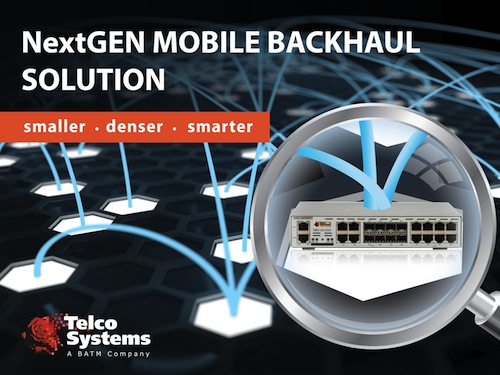Telco Systems is targeting the small cell mobile backhaul market with what it is claiming is the smallest, densest and smartest Ethernet demarcation device on the market.
The company has launched the T-Marc3312sc, a 12Gb device designed to sit at the edge of the mobile network and handle TDM and IP traffic over MPLS and Ethernet as it enters mobile operators’ backhaul networks. Extending IP/MPLS to the network edge enables operators to handle different services over their networks, whilst applying QoS features such as hierarchical queuing, rate limiting and traffic shaping, advance scheduling schemes, and intuitive service-oriented SLA configuration.
Nir Halamchi, Product Line Manager at Telco Systems, said, “Mobile operators today are facing a huge data surge and are planning to deploy more and more cell sites, as well as progressing with radio technology for smaller and smaller cells in denser deployments. Mobile backhaul is then an issue: backhauling information from cell site to the switching centre is becoming problematic so we have started to see more and more fibre being used and deployed — and in that sense this is the one device in the market that can help them [operators] provide this kind of deployment.”
Halamchi said the product has been produced with the small cell market in mind. It’s “high density” will enable it to act as an aggregation device for clusters of cells, or Cloud RAN type deployments.
“Operators will have very limited real estate for small cell deployments. This product has been designed to enable them to still serve a large number of pico cells scattered around an area, aggregated into this central point for them,” he added.
The new device is based on Telco Systems’ existing edge demarcation product, the T-Marc3208, with the product being squeezed into a 1RU high/ half shelf wide box, with 4×10/100/1000BaseTx, 8 dual-speed (100M/1G) fiber ports and 8xE1/T1 Circuit Emulation Services (CES) ports for 2G/3G migration. “We’ve managed to keep the same levels of functionality, capacity and density with full 12Gg line rate, and even more amazing is we’ve managed to keep protocol support that enables traffic engineering capabilities and full MPLS to the customers,” Halamchi added.
The product provides Circuit Emulation support for TDM over IP, something Halamchi said was increasingly popular amongst European and Asian operators who appreciate having a converged device at the network edge. “In the USA, there’s not a huge market for CES,” Halamchi said.
The product is currently in Beta testing and will be commercially available in Q1 2013.


